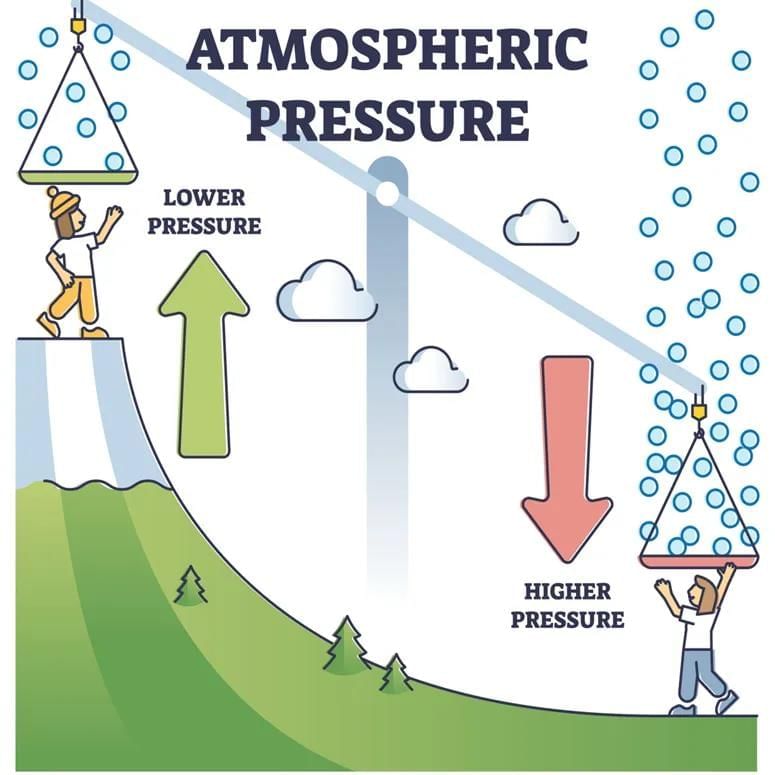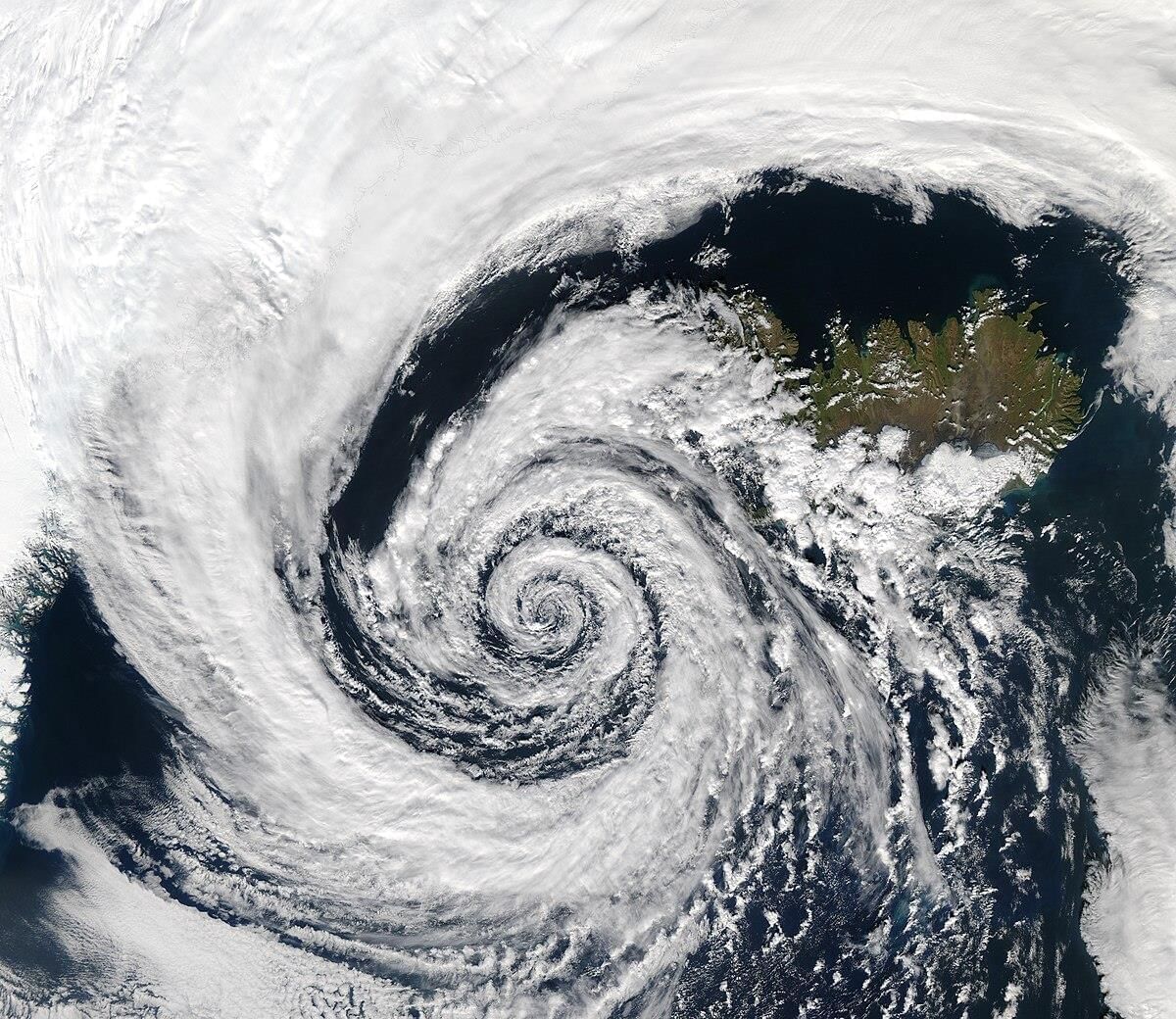Class 8 Exam > Class 8 Notes > Science Class 8 > Mnemonics: Pressure, Winds, Storms, and Cyclones
Mnemonics: Pressure, Winds, Storms, and Cyclones | Science Class 8 PDF Download
1. Factors Affecting Air Pressure
Mnemonic: "Hot High Humid"
- Hot: Temperature of air — warmer air reduces pressure.
- High: Altitude above sea level — pressure decreases with height.
- Humid: Water vapour content — more humidity lowers air pressure.

2. Conditions Causing Wind
Mnemonic: "Hot air up, Cold air down, Winds Move around."
- Hot air up: Hot air rises — creates low-pressure areas.
- Cold air down: Cold air sinks — creates high-pressure areas.
- Winds Move around: Air moves from high to low pressure — causes wind.
3. Factors Causing Cyclone Formation
Mnemonic: "Warm Moist Clouds Spin Rapidly"
- Warm: Warm ocean water heats air — provides energy for cyclone.
- Moist: Moist air rises — adds humidity to the system.
- Clouds: Clouds form by condensation — creates storm structure.
- Spin: Spinning due to Earth’s rotation — Coriolis effect causes rotation.
- Rapidly: Rapidly lowering pressure draws in air — intensifies cyclone.
 Cyclone
Cyclone
4. Conditions for Lightning Formation
Mnemonic: "Rising Winds Charge Clouds"
- Rising: Rising and falling strong winds — create turbulence in clouds.
- Winds: Water droplets and ice rub — generate electric charges.
- Charge: Charge separation in clouds — leads to lightning potential.
5. Effects of Cyclones
Mnemonic: "Waves Flood Fields, Cut Connections"
- Waves: Wall of water floods coasts — storm surges inundate areas.
- Flood: Flooding from heavy rain — causes waterlogging and damage.
- Fields: Farmland damaged by saltwater — affects crops and soil.
- Cut Connections: Communication/power lines disrupted — impacts infrastructure.
6. Precautions During Lightning
Mnemonic: "Stay Low, Avoid Metal, Leave Water"
- Stay: Stay in low-lying open area — avoid high ground or trees.
- Low: Low crouched position — minimizes lightning strike risk.
- Avoid: Avoid metallic objects/umbrellas — prevent conducting lightning.
- Leave: Leave water immediately — water conducts electricity.
7. Sequence of Thunderstorm Formation
Mnemonic: "Warm Air Rises, Clouds Cool, Rain Falls"
- Warm Air Rises → Moist warm air lifts upward, starting the storm.
- Clouds Cool → Rising air cools, condensation forms towering clouds.
- Rain Falls → Heavy rain (sometimes hail/snow) pours down.
The document Mnemonics: Pressure, Winds, Storms, and Cyclones | Science Class 8 is a part of the Class 8 Course Science Class 8.
All you need of Class 8 at this link: Class 8
|
136 videos|530 docs|57 tests
|
FAQs on Mnemonics: Pressure, Winds, Storms, and Cyclones - Science Class 8
| 1. What are the main factors affecting air pressure? |  |
Ans. The main factors affecting air pressure include temperature, altitude, and humidity. As temperature increases, air expands and becomes less dense, leading to lower pressure. At higher altitudes, the amount of air above decreases, resulting in lower air pressure. Humidity also plays a role; moist air is less dense than dry air, causing lower pressure in areas with high humidity.
| 2. What conditions lead to the formation of wind? |  |
Ans. Wind is primarily caused by differences in air pressure in the atmosphere. When air moves from high-pressure areas to low-pressure areas, it creates wind. Factors such as temperature differences between land and water, the Earth's rotation (Coriolis effect), and geographical features like mountains and valleys can influence wind patterns.
| 3. What are the key factors that contribute to the formation of cyclones? |  |
Ans. Cyclones typically form over warm ocean waters when certain conditions are met. Key factors include warm sea surface temperatures (usually above 26.5°C), sufficient moisture in the atmosphere, low vertical wind shear, and the presence of the Coriolis effect to initiate rotation. These conditions allow for the organization and intensification of storm systems.
| 4. What conditions are necessary for lightning to form during a thunderstorm? |  |
Ans. Lightning forms during thunderstorms when there is a buildup of electrical charges in the atmosphere. Key conditions include the presence of strong updrafts that carry moisture upward, the formation of ice crystals, and a sufficient separation of positive and negative charges within the cloud. When the electrical potential between these charges becomes great enough, it results in a discharge, creating lightning.
| 5. What precautions should be taken during lightning storms? |  |
Ans. During lightning storms, it is important to take several precautions for safety. Stay indoors and avoid using electrical appliances or wired devices. If outdoors, avoid open areas, tall trees, and metal objects. Seek shelter in a sturdy building or vehicle, and stay away from water, as it can conduct electricity. If no shelter is available, crouch down with your feet together and cover your ears to minimize the risk of being struck.
Related Searches
















